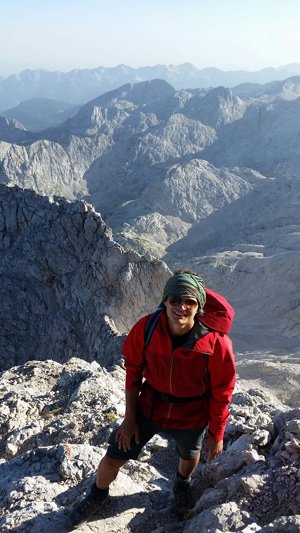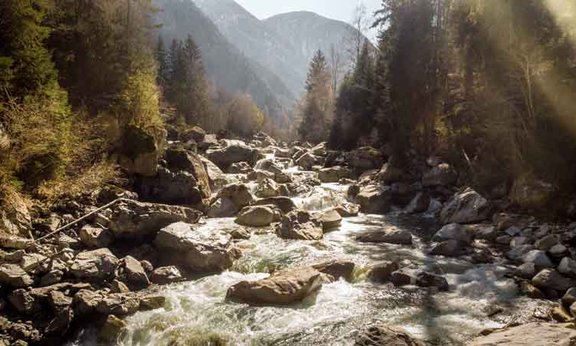Since always I was fascinated by rivers. I played on the river bank as a child and now as a kayaker I experience the power of the water in steep rapids and the grounding effect of remote gorges. With my research I am able to combine on the one hand my passion for rivers and on the other hand my curiosity as a scientist.

The negative effects of dams and weirs on biodiversity and ecosystem functions are well known. However, rarely anyone talks about the increase of GHG production of an (aquatic) ecosystem after impoundment of a river. All across the globe free-flowing rivers and streams are dammed in the name of decarbonization and decentralization of energy production - often with government subsidies. This is especially true for small scale hydropower plants which have a high ecological impact as they disrupt the river continuity, whilst contributing only minimal to energy production.
The interruption of a river continuum has large impacts not only on biodiversity of flora and fauna along the ecosystem but also on morphology and the downstream transport of materials by the river. We can see a river as an active bioreactor where material is not only transported but also processed, transformed and decomposed. Organic matter, i.e. leaves and wood is metabolized within the river. A big part thereof can be attributed to microbial degradation. In the presence of oxygen microbes mainly produces CO2 - in anaerobic conditions however CH4 can be produced. Biological methanogenesis is an anaerobic process performed by methanogenic archea and bacteria which occurs in deep water layers or in the sediment of lakes and reservoirs. If flow conditions are changed from a free-flowing, well oxygenated river into an impounded section (e.g. reservoir) an environment for potential methane production is created.
To limit global warming, it is important to know sources and sinks of GHG’s and to avoid further emission sources. To date inland waters are one of the biggest uncertainties regarding GHG emissions because of high spatio-temporal variability in emissions. Hence, we need to better quantify GHG emissions originating from anthropogenic alterations to natural ecosystems (e.g. reservoirs) to be able to better assess their impact on global warming. This is especially true for potential sources of methane, as CH4 has a global warming potential 25 times as strong as CO2.
During my research I want to quantify GHG emissions of free-flowing rivers and streams as well as from impounded river sections. To get data I am planning to realize field campaigns to the areas of interest - the focus of my research is the Balkan Peninsula (a hot spot for planned hydropower with around 3.000 projects in the pipeline) and various rivers in the Austrian Alps.
Additionally, I want to develop a home-made cheap sensor-logger unit for dissolved GHG’s. By using this sensor unit, a wider spatial and temporal analysis of GHG emissions can be achieved with little investment costs.
The broad topic of my PhD research combined with different tasks gives me the opportunity to develop new skills in various fields ranging from electronics to data analysis and ecology. Therefore, I see my PhD as a chance for personal education while combining passion with science.
Martin Dalvai-Ragnoli
Research Group: Fluvial Ecosystem Ecology
Martin.Dalvai-Ragnoli@uibk.ac.at
Archive - Meet an Ecology PhD articles

